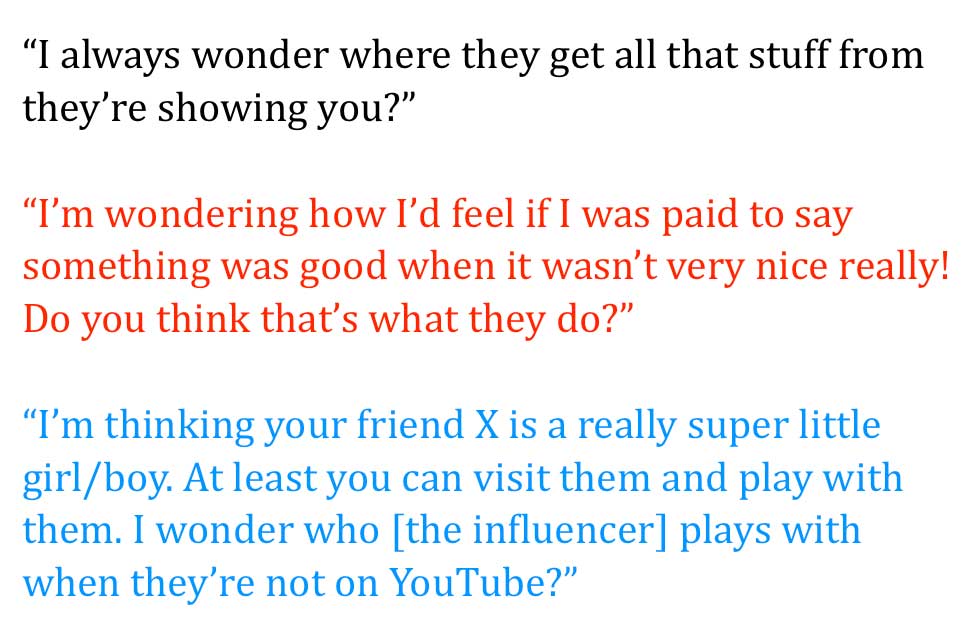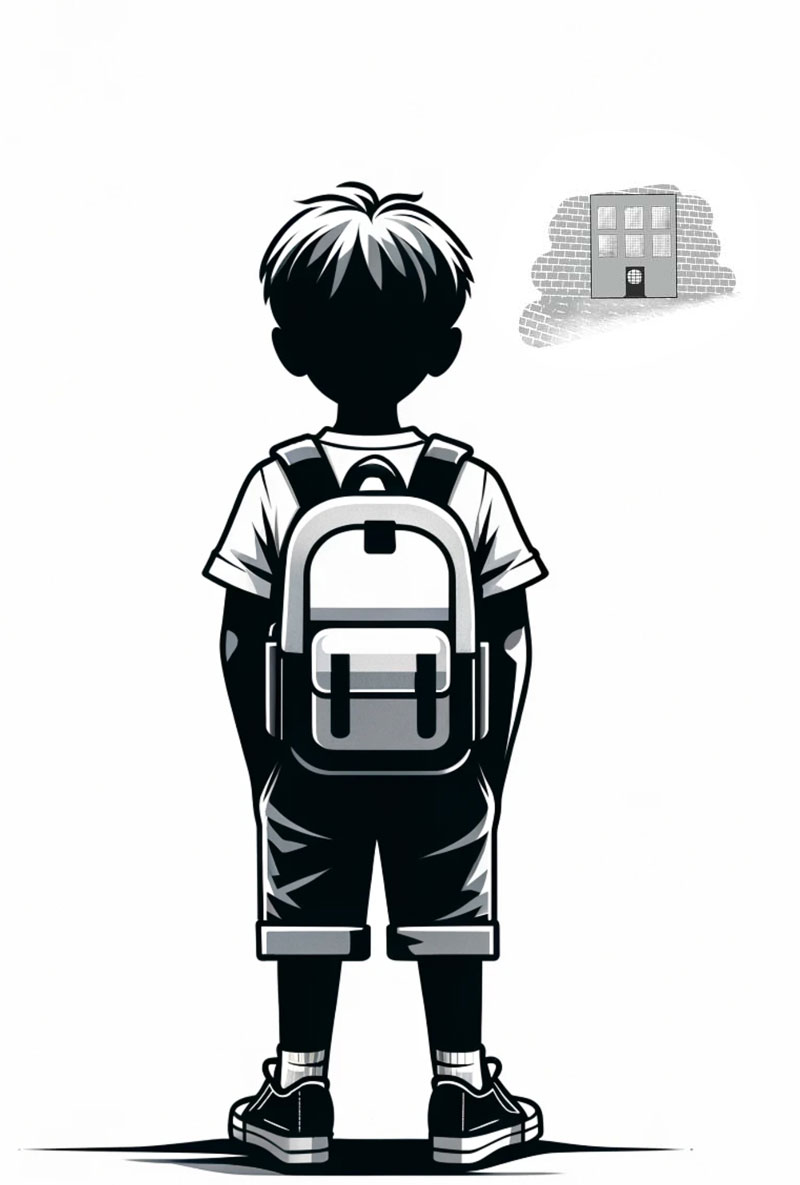Being bullied is soul-destroying: the answer is to raise your child’s confidence
|
Bullying is ongoing hurtful behaviour of any kind aimed at a child and intended to victimise them over a period of time. |
Being bullied is a common problem in schools, but bullying is out in the world too, so your child needs to learn how to manage it now.
That thought doesn’t make it any easier for you, though. It’s awful for a parent to feel they can’t protect their child at school. But you can – indirectly.
So I’ll give you a few ideas here to see if one might be useful as you try to help your child. [If you're interested in taking your child out of school for the time being, see here.]

If you were to ask your child what’s making them so fearful of going to school, or so miserable on their messaging app (when they’re allowed one!), or unwilling to go to a sleepover, for instance, their answer could be, “X is bullying me” or "I'm being bullied".
But more often, you won’t get a straight answer. The reason?
Your child is blaming themselves.
They could be blaming themselves for any one of these things:
- I’m thin/fat/ugly/not popular
- I don’t like football much
- I haven’t got all the things the others have
- I caused it
- I’m just no good
- I feel different, not like others*
- I always get the answer wrong in Maths…
That sort of thing.
[*See this page if you wonder whether your child is having identity issues.]
And all these self-blame, possible answers mean that your child won’t want to talk about it.
They feel bad enough already, because they believe these things. On top of that, will your child who's being bullied also risk being shamed in front of you, who they admire and love? Not likely.
So you’re going to have to help them:
- be willing to talk about it, and
- feel something different that empowers them.
First step when being bullied
When you suspect that being bullied is at the bottom of your child's anxious behaviour, one way to encourage sharing and discussion is to gently mention an incident from your own experience of being bullied (at a suitable moment – probably not when you're in a hurry to get them to school):
“I just wondered if something horrible is happening at school. I remember there was an older lad/girl at mine, and s/he…” Say what happened. Say what you felt and say what you did eventually that stopped it.
If you don't have an anecdote of being bullied yourself, invent what we sometimes call a “child in your pocket” – which merely means you name some "invented child you once knew" who had X happen and felt Y and did Z.
Children will always listen to stories.
But – the chief benefit of this approach is that there are now words, feelings and possible actions out there for discussion.
You could stop short of saying what happened in the end. You could, instead, ask your child what they think you did, or what they think that child could have done next.

Another way to encourage your child to open up is to set up a little drawing with either a big tick or a smiley face on the left-hand side (according to how old your child is) and a big cross or unhappy face on the right-hand side of the paper.
Make both of them (marks or faces) large enough that words can be written inside.
The idea is to list as many things as possible, “good” or “bad”, about school that your child and you can think of (yes, take part too, but maybe not too confidently, maybe tentatively). These words are written into the shape.
Be curious:
1 Which side fills up first? (information to store in mind)
2 Which ideas did your child find easiest to express? (more data)
3 Ask your child, “I wonder what made this side so much better than this side?” (whichever way round it was, indicating them)
4 Maybe also ask, “Which is the worst thing about this side [the bad side]?
Plus – look at all the words on the “bad” side, grab a sheet of paper and suggest you could jointly sort them into “can do something about” and “can’t do something about”. That way you start the conversation about dealing with any problems, including being bullied.
Maybe bullying hasn’t been mentioned yet, but this activity immediately changes your child from feeling helpless in the face of life/school/problems to feeling hopeful and empowered.
Both of these talking activities give your child confidence to take further steps.

Second step when being bullied
OK, let's say you know you’re dealing with the topic of bullies and that your child is being bullied. You need to feel confident you can help – and your child needs to start getting angry about it.
I’m not talking about aggression. Just anger. Aggression hits out. Anger is an energetic feeling that helps you take action in the right way.
So your child's feelings of being bad need to be transformed into a sort of "righteous anger" – your child does not deserve to be bullied.
One way to start the transformation of feelings
Help your child to think how they really felt when being bullied – when a child called them names or took their bag or pushed them deliberately, or whatever usually happens.
Right up top I mentioned the self-blame feelings children normally feel. Maybe those get mentioned here. Perhaps they’re afraid they’ll hit or shout back and get into trouble. Perhaps it’s a group of kids so they’re just plain scared.
Usually, however, a genuine feeling of anger was momentary and then got buried in these other self-blame feelings. You need to get it back again.
Draw an outline picture of of your child and get them to name all those bad feelings and fill them in.
Then ask them to feel very angry indeed about what happens and about being bullied – after all, bullying is never right. Get them to tell you how they feel when they’re angry about it:
- think about how hot or cold they feel,
- what their hands are doing,
- what their heart is doing,
- where their face is looking – that sort of thing.
Draw another outline picture and put those feelings in it.
Explain that’s how they need to feel when being bullied so they don’t look like a victim that someone can pick on.
Explain, too, that this doesn't mean they're going to lash out or do something stupid or risky. Just feel it.
A way to continue the transformation of feelings
Talk about posture. You know, the sort of thing our parents always nagged us about: “Stand up straight!”
This is where it gets fun, because you can both act it out and experiment together. You can play devil’s advocate a bit, if you like, by not getting it right first time.
The best posture for looking confident and showing anger without being aggressive is this:
- Head up straight
- Eyes directly on the person they’re confronting
- Shoulders back
- Feet slightly apart
- Standing squarely on both feet
- Back straight
- Hands either on their hips or one hand pointing at the bully.
- Giving a defiant stare – usually aimed at the other person's nose so as not to invite more trouble
- Confident words said calmly but firmly eg “I’m not going to stand for that.”
Right now, we’re talking school and school playgrounds.
If your child can use this kind of posture as a regular thing, it will deter bullies. They won’t need to say anything. And if it’s best to turn away and not speak, that’s okay either. But keep the posture of defiance and confidence.
So if you’re having a trial run or pretend session, take different roles in turn and play around with the ideas until your child says you’ve got the right posture. And then they can try getting the right posture to look confident and show you that they can do it too!
Schools make every effort at having sound policies, and generally encourage children to treat each other decently when they hear about incidents.
But that's the thing: bullying is a snide activity, carried out under the table, out of sight, and beyond the school gates if quashed within the grounds – and often by txt msg 24/7. For some children it seems there’s no escape.
That’s why I think you need to change your child’s feelings and confidence rather than just teach them to either hit back (what?! Although I know it works!) or tell the teacher – which nearly always gets them into worse trouble.
Being bullied is awful. Finding greater strength and confidence in themselves will be your child’s biggest help for years to come.
If you have an anxious child who's being bullied and who would love to be read to or read a fun story themselves, this book might be just the thing. Mostly because it shifts the attention onto fictional children – one of them must surely resonate with your child! – and gives hope of a way to deal with bullies. By Alex Hallatt and Moontoon Publishing, you can find it here (book one of a series).
Other ways of boosting self-confidence involve letting them learn a martial art, take up boxing or another sport they can excel at – your child will not only feel a sense of achievement but also learn to solve problems by themselves.
Finding a new friend at those activities will also stand them in good stead. Friends deter bullies by simply avoiding so many individual isolated moments.
There is, sadly, no one perfect way to solve bullying.
Obviously in a situation where there is a gang of older youths outside school and some danger to your child, they need to escape to the nearest safe person, or shop, or open space with people around.
The increase of children carrying knives to feel safe makes hanging around dangerous. However, a confident attitude may just help deter people in the first instance.
As ever, if you feel you really need your child to work with a counsellor for a while, please visit my Help page where there's lots of information and advice about where and how to choose one safely.
TAKEAWAY
- Bullying is widespread and can deeply affect children, who often blame themselves for being targeted.
- Encouraging children to talk about their experiences and feelings is crucial. Sharing personal stories or using creative activities can help open up dialogue.
- Teaching children to transform their feelings from helplessness to constructive anger empowers them to stand up against bullying.
- Practicing confident body language and assertiveness can deter bullies. Activities that boost self-esteem, like martial arts, can also help.
- Friendship and social support are vital in preventing bullying; no single solution fits all situations, but building confidence and coping skills is key.























